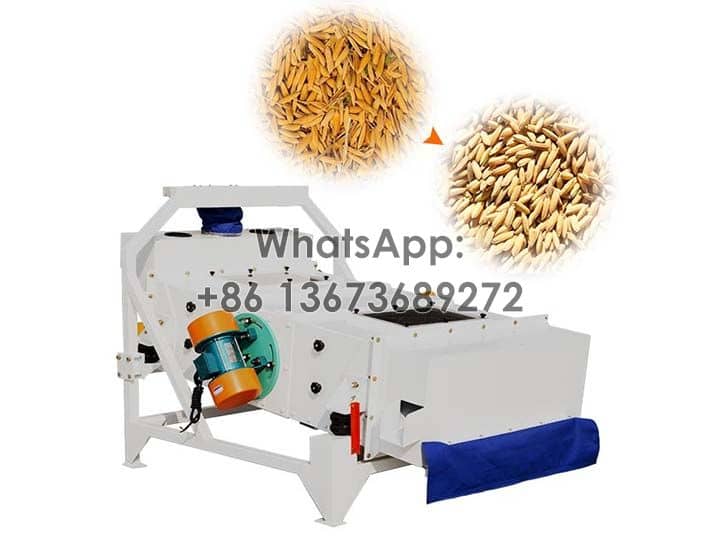Vibrasie skoonmaker

Vibrasie skoonmaker skoonmaak die groot, klein en ligte onreinhede van korrels. Veral in die groot kapasiteit volkome rysmeul aanleg, is die rys vibrasie skoonmaker masjien die aanvanklike en nodige stap. Dit is geskik vir nie net rys nie, maar ook koring, grondboontjies, sesam, sojabone, ens. Daarbenewens is dit toegerus met twee vibrasie motors. Soms word dit gebruik vir die gradering van halfafgewerkte of voltooide produkte. Al met al is die vibrasie sif masjien nodig vir die volkome rysmeul aanleg. As u enige twyfel het, welkom om kontak ons vir meer besonderhede!
Struktuur van Paddy Vibration Cleaner
Ons masjien sluit inlaat, die uitlaat onderskeidelik vir onsuiwerhede en paddy rys, vibrasie motor.

Voordele van vibrerende sifskoonmaker
- Redelike struktuur, super kwaliteit, stabiele werkverrigting.
- Hoë skoonmaakdoeltreffendheid en lae energieverbruik.
- Klein masjiene wat klein spasie in beslag neem.
- Bekende handelsmerk in die internasionale markte.
- Pasmaak. Jy kan ooreenstem met die ooreenstemmende siwwe gebaseer op paddy-rys.
Werksbeginsel
Die vibrasie skoonmaker voer sy werk uit volgens die gatgrootte van die sif. Byvoorbeeld, in die moderne rysmeul produksielyn te koop, neem die vibrasie skoonmaak masjien 'n tweeklaagse sif aan. Oor die algemeen het dit drie uitlae. Een is vir die groot onreinhede, een is vir die klein en ligte onreinhede, en die ander is vir die rys. Dit is maklik om te verstaan. As daar enige twyfel is, kontak ons asseblief vir meer inligting!